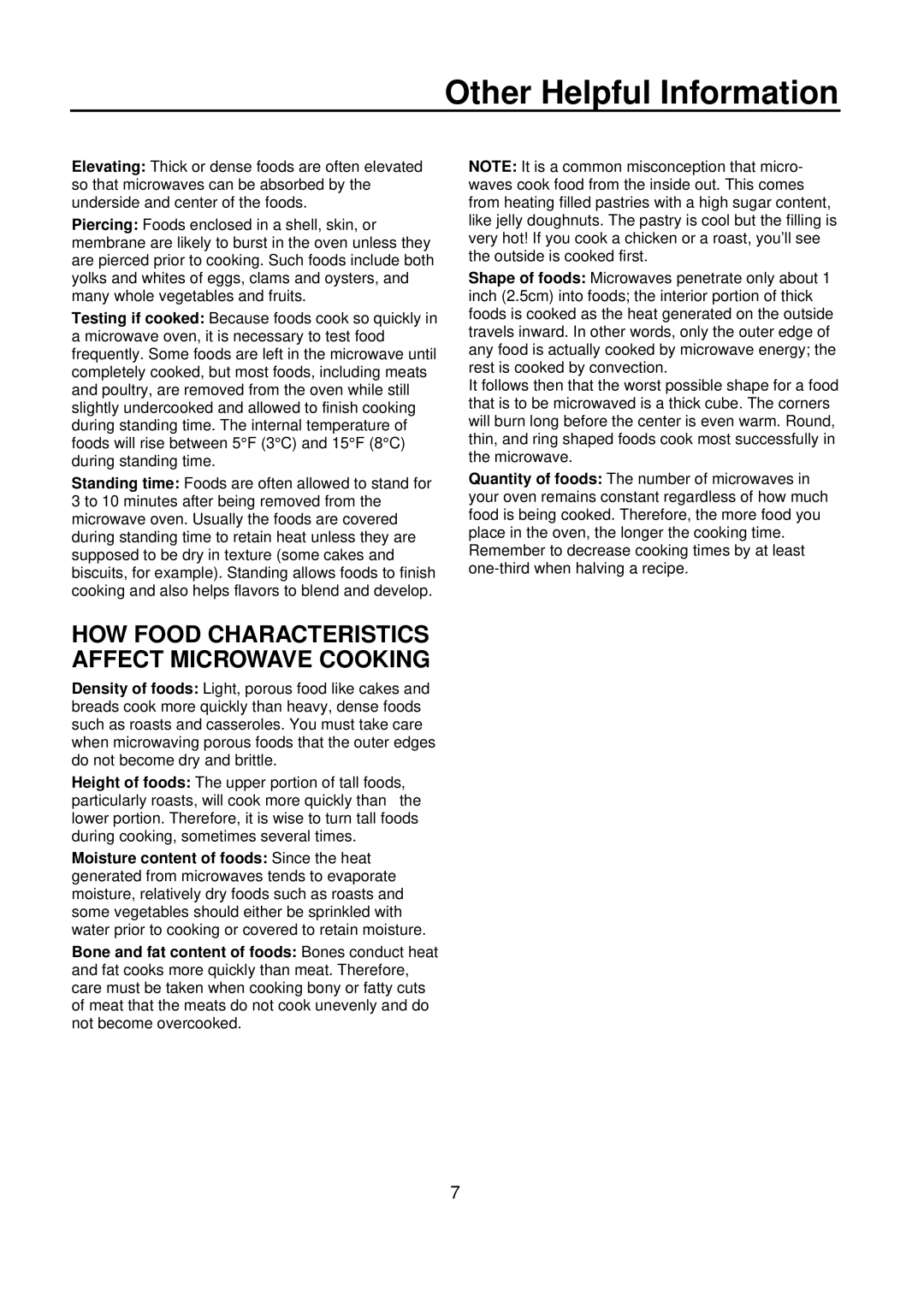ACM0720A specifications
The Amana ACM0720A is a compact and efficient countertop microwave that exemplifies modern cooking convenience and versatility. With a sleek design and user-friendly features, this microwave appeals to a wide range of culinary needs, making it an ideal addition to any kitchen.One of the standout features of the Amana ACM0720A is its 700-watt cooking power. This wattage is perfect for reheating leftovers, defrosting frozen meals, and cooking a variety of dishes quickly and efficiently. The microwave is equipped with multiple power levels, allowing users to customize cooking settings based on their specific needs.
The Amana ACM0720A has a generous capacity of 0.7 cubic feet, making it suitable for small spaces while still providing ample room for a standard dinner plate or a medium-sized casserole dish. This compact size makes it a perfect fit for apartments, dorms, or even as an additional microwave in larger kitchens.
One of the microwave's key technologies is its intuitive control panel. The digital display features a simple layout with easy-to-read buttons that make operation hassle-free. Users can take advantage of one-touch cooking options for a variety of popular foods such as popcorn, pizza, and beverages, streamlining the cooking process and ensuring perfect results with minimal effort.
Additionally, the Amana ACM0720A is equipped with a turntable that ensures an even cooking experience. By rotating the food as it cooks, the turntable eliminates cold spots and helps achieve consistent results every time. The microwave also includes a timer and a clock function, allowing users to keep track of cooking times with ease.
In terms of safety, the Amana ACM0720A features a child lock function, preventing accidental operation by young children. This added level of security makes it a practical choice for families.
Overall, the Amana ACM0720A combines functionality, style, and convenience in a compact package. Its user-friendly features, adjustable power levels, and reliable cooking performance make it an excellent choice for anyone in need of a dependable microwave that doesn't compromise on quality. Whether reheating a meal, defrosting ingredients, or preparing snacks, the Amana ACM0720A delivers consistent and satisfying results.
